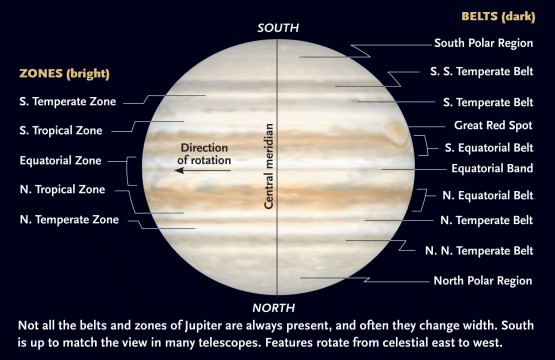Jupiter Whacked Again? Japanese Astronomers Record Possible Impact – Sky & Telescope
[ad_1]

Ko Arimatsu / Kyoto University
Get your scorecards out — Jupiter just took another interplanetary hit. If it’s confirmed it would be the 11th observed comet or asteroid strike at the gas giant since the pieces of Comet Shoemaker-Levy 9 slammed into Jupiter in 1994.
A little more than a month after five amateurs independently recorded a similar flash, a team of astronomers, led by Ko Arimatsu of Kyoto University, filmed this most recent flare in Jupiter’s cloud tops at 13:24 UT on Friday, October 15th.
Ko Arimatsu / Kyoto University
Arimatsu and the group used a surveillance system called PONCOTS as part of the Organized Autotelescopes for Serendipitous Event Survey (OASES) project to make their discovery. Although we’ve yet to nail down the flash’s precise Jovian latitude and longitude, the event occurred in Jupiter’s North Tropical Zone near the southern edge of the North Temperate Belt. From the video, the burst lasted about 4 seconds. It quickly rises into visibility, maintains a steady light for about 2 seconds and then swiftly disappears.

Sky & Telescope illustration
According to the Europlanet Society, on average 6½ objects 10 meters across and larger (that is, big enough for amateurs to record) hit Jupiter each year. Aided by transient-alert software like DeTeCt, we’ve seen a steady uptick in the number of impacts in recent years, proving that the more we look, the more we see. The most recent impact, in September, didn’t produce a visible impact scar. This one may not either. But both events make us keenly aware of the potential hazards that still lurk in our solar system.

Ko Arimatsu / Kyoto University
Amateurs who photographed and took video of the Jupiter around the time of the potential impact are urged to contact either Marc Delcroix or Ricardo Hueso to provide confirmation of the event. Let us here at Sky & Telescope know, too! Just leave a comment, and I’ll make sure to contact you.
Advertisement
[ad_2]
Original Post




